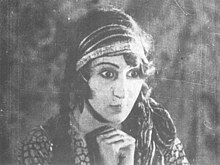
Reza Shah Pahlavi was an Iranian military officer and the founder of the Pahlavi dynasty. As a politician, he previously served as minister of war and prime minister of Qajar Iran and subsequently reigned as Shah of Pahlavi Iran from 1925 until he was forced to abdicate after the Anglo-Soviet invasion of Iran in 1941. He was succeeded by his eldest son, Mohammad Reza Shah. A modernizer, Reza Shah clashed with the Shia clergy and introduced many social, economic, and political reforms during his reign, ultimately laying the foundation of the modern Iranian state.
Masjed Soleyman is a city in the Central District of Masjed Soleyman County, Khuzestan province, Iran, serving as capital of both the county and the district.
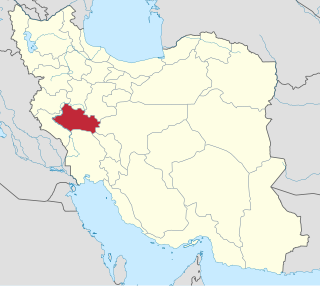
Lorestan province is one of the 31 provinces of Iran. Its capital is the city of Khorramabad.

The Bakhtiari are a Lur tribe from Iran. They speak the Bakhtiari dialect of the Luri language.

The cinema of Iran, or of Persia, refers to the film industry in Iran. In particular, Iranian art films have garnered international recognition. Iranian films are usually written and spoken in the Persian language.

Abdolhossein Sepanta was an Iranian film director and producer. He made the earliest sound films in the Persian language. He was also a writer and journalist and promoter of liberal politics.

Sardar Asaad Bakhtiari, also known as Haj Ali-Gholi Khan, Sardar Asaad II was an Iranian revolutionary and a chieftain of the Bakhtiari Haft Lang tribe. The third son of Hossein Gholi Khan Ilkhani, he was one of the primary figures of the Persian Constitutional Revolution. He was the brother of Najaf-Qoli Khan Bakhtiari Samsam Ol-Saltaneh, Bibi Maryam Bakhtiari Sardar Bibi, and Khorou Khan Bakhtiari Sardar Zafar.
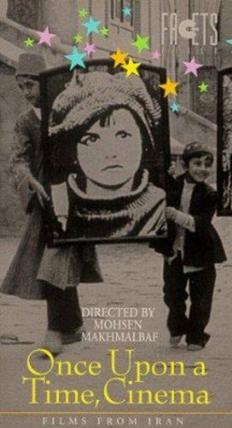
Once Upon a Time, Cinema is a 1992 Iranian comedy fantasy film written and directed by Mohsen Makhmalbaf.

Khan Bahadur Ardeshir Irani was a writer, director, producer, actor, film distributor, film showman and cinematographer in the silent and sound eras of early Indian cinema. He is considered one of the greatest personalities in recent Indian Cinema. He was the director of India's first sound film Alam Ara. He was the producer of India's first colour film Kisan Kanya. He was renowned for making films in Hindi, Telugu, English, German, Indonesian, Persian, Urdu and Tamil. He was a successful entrepreneur who owned film theatres, a gramophone agency, and a car agency.
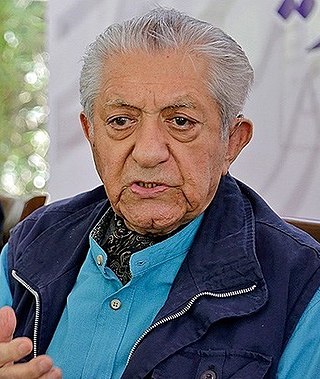
Ezzatollah Entezami or Ezzatolah Entezami was an Iranian actor. Entezami, Ali Nasirian, Mohammad Ali Keshavarz, Jamshid Mashayekhi and Davoud Rashidi are known as "the five most important actors in the history of Iranian cinema" because of their influence.

Hezardastan also known as Hezar Dastan, was an Iranian epic historical drama television series from 1987, developed and directed by Ali Hatami. Hezar Dastan is considered one of the most important and most influential works of art in the history of Islamic Republic of Iran Broadcasting. The show's story, characters, acting, style, and music were highly acclaimed by critics and fellow directors of the time, and the influence of the show's themes and story can be seen in Iranian popular culture as well as many works of art coming in later years.

Ovanes Ohanian was an Armenian-Iranian filmmaker, inventor, founder, doctor, scientist with PhD in medicine, film, science and languages. He established the first film school in the history of Iran. His first film, Abi and Rabi (1930) was Iran's first feature-length movie. He founded the first acting school in Iran and the first acting school in India together with the first police school in Iran. He was fluent in seven languages. He died of Heart attack in his office in Tehran. The museum in Tehran contains relevant information of his life.
Iranian New Wave refers to a movement in Iranian cinema. It started in 1964 with Hajir Darioush's second film Serpent's Skin, which was based on D.H. Lawrence's Lady Chatterley's Lover featuring Fakhri Khorvash and Jamshid Mashayekhi. Darioush's two important early social documentaries But Problems Arose in 1965, dealing with the cultural alienation of the Iranian youth, and Face 75, a critical look at the westernization of the rural culture, which was a prizewinner at the 1965 Berlin Film Festival, also contributed significantly to the establishment of the New Wave. In 1968, after the release of Shohare Ahoo Khanoom directed by Davoud Mollapour, The Cow directed by Dariush Mehrjui followed by Masoud Kimiai's Qeysar in 1969, Nasser Taqvai's Tranquility in the Presence of Others, and immediately followed by Bahram Beyzai's Downpour, the New Wave became well established as a prominent cultural, dynamic and intellectual trend. The Iranian viewer became discriminating, encouraging the new trend to prosper and develop.

The Shamlu tribe, also known as the Shamli tribe, was one of the seven original and the most powerful Qizilbash tribes of Turcoman origin in Iran.

Roohangiz Saminejad was an Iranian actress. She is famous in Iran for playing the heroine Golnar in Lor Girl (1934), which was the first film made in the Persian language, making her the first Iranian film star in a talkie film.
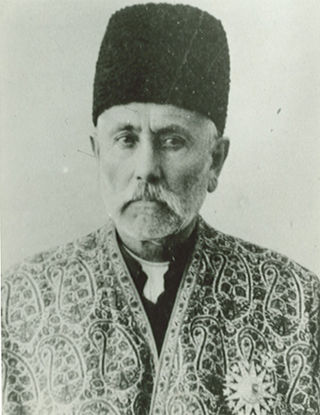
Najaf-Qoli Khan Bakhtiari also known as Saad al-Dowleh and Samsam al-Saltane (1846–1930), was a Persian Prime Minister and a leader of the Iranian Constitutional Revolution. He was elected Prime Minister for two terms, first from 3 May 1909 to 16 July 1909 and again from 23 December 1912 to 17 January 1913, when he resigned from the office. He was a representative of Parliament of Iran from Tehran in the 4th Parliament. He was the older brother of Ali-Qoli Khan Bakhtiari, better known as Sardar Assad, Bibi Maryam Bakhtiari and Khosrou Khan, Sardar Zafar Bakhtiari. He died in 1930 in Isfahan.
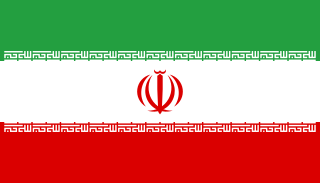
Corruption in Iran is widespread, especially in the government. According to a report in 2024, Iran ranks close to the bottom on the Corruption Perception Index of Transparency International. While Ali Khamenei claims corruption in the country is "occasional rather than systemic," corruption in Iran is an instrument of national strategy and a core feature of the political order.

Farah Pahlavi is the former Queen and last Empress of Iran and is the widow of the last Shah of Iran, Mohammad Reza Pahlavi.
Naser al-Din Shah's slide was a slide in the subterranean baths of the Negarestan Palace in Tehran, Qajar Iran. The Encyclopedia Iranica notes that Western visitors commented on "the royal palace of Negārestān and salacious reports about its slide used for erotic purposes". The slide was destroyed by Reza Shah Pahlavi after he overthrew the Qajar dynasty.

Majid Entezami is an Iranian composer, conductor, musician and oboist. He composed music for nine television series, ten suite symphonies and over eighty movies. His works include The Cyclist, The Fateful Day, The Glass Agency and The Insane Flew Away, all of which he was awarded the best award for film music for in the International Fajr Film Festival of Tehran. Besides that, his music for The Train, Once Upon A Time, Cinema, From Karkheh To Rhine, Attack on H-3, The Fragrance of Joseph's Shirt, Duel, A Place To Live, Intense Cold, The Saint Mary, The Men of Anjelos, The Wolves and The Loneliest General are some of his most notable, memorable and nostalgic works for Iranians. Majid Entezami is one of the most active film composers after the revolution of Iran.

